Ford Puma vs Jeep Renegade – Which one offers the better deal?
Two cars, one duel: Ford Puma meets Jeep Renegade.
Which one wins in performance, efficiency and value for money? Find out now!
Urban Warriors: Ford Puma vs. Jeep Renegade
The automotive world is no stranger to the rising trend of compact SUVs, a perfect blend of efficiency and performance suitable for city streets and rugged terrains alike. Two prominent players in this category are Ford's stylish Puma and Jeep's robust Renegade. Both cars offer exciting features and innovative technology, catering to varying needs and preferences. This article delves into the comparison of their technical aspects and innovations to aid potential buyers in making an informed decision.
Powertrain and Performance
The Ford Puma presents a range of power options, including petrol mild hybrids and electric variants. The most powerful offering reaches 168 HP, delivering torque up to 290 Nm and achieving an optimal balance of performance and fuel efficiency with a co2 output rating as low as 0 g/km on its electric variant. The Puma further offers manual and dual-clutch automatic transmissions, all complementing its front-wheel-drive configuration. Acceleration from 0 to 100 km/h takes between 7.4 and 9.8 seconds, dependent on the engine choice, and a top speed reaching up to 210 km/h.
Meanwhile, the Jeep Renegade also offers a diverse range in its lineup, including petrol mild hybrids and a more eco-friendly plug-in hybrid option. Delivering power between 130 and 240 HP, the Renegade is equipped with dual-clutch automatic or standard automatic transmissions, paired with either front-wheel or all-wheel drive. Accelerating from 0 to 100 km/h ranges from 7.1 to 9.7 seconds, matching the Puma's speed efficiency, while offering a slightly different driving experience with its 191 to 199 km/h top speed.
Fuel Efficiency and Environmental Impact
The Puma's prowess in fuel efficiency is highlighted by its consumption figures, ranging from 5.4 to 6 L/100 km for petrol variants and 13.1 to 13.7 kWh/100 km for the electric model. Its electric variant can travel up to an impressive 376 km on a single charge, with a battery capacity of 43 kWh.
On the other hand, the Renegade's standout feature is its plug-in hybrid configuration, boasting a significant reduction in fuel consumption at 2.1 L/100 km, although with a much shorter electric range of 36 km. The CO2 efficiency class favours the plug-in hybrid with ratings as low as B, though higher for other variants.
Dimensions and Practicality
With a length up to 4226 mm, width of 1805 mm, and height between 1550 and 1555 mm, the Ford Puma houses a spacious interior without compromising on a compact exterior. The trunk capacity offers ample storage space from 456 to 523 liters, making it practical for urban family adventures.
The Jeep Renegade is slightly taller at heights between 1684 and 1718 mm, offering a broader stance with its signature rugged appeal. Its trunk is somewhat smaller at 330 to 351 liters, a compromise for its off-road capabilities and slightly larger payload capacity, accommodating between 545 and 570 kg.
Conclusion
Choosing between the Ford Puma and Jeep Renegade often boils down to personal priorities. The Puma caters to those seeking a sportier edge with viable electric options, emphasizing fuel efficiency and modern design. Conversely, the Renegade offers a more rugged approach, with off-road capabilities and hybrid technologies appealing to environmentally conscious adventurers. Both vehicles represent excellent choices in their own right, suiting different lifestyles and driving preferences. For those in the market for a versatile and dynamic compact SUV, the decision ultimately rests on the finesse of urban elegance or the allure of adventurous capability.
Here’s where it gets real: The technical differences in detail
Costs and Efficiency: Price and efficiency are key factors when choosing a car – and this is often where the real differences emerge.
Ford Puma has a minimal advantage in terms of price – it starts at 24800 £, while the Jeep Renegade costs 26700 £. That’s a price difference of around 1886 £.
Fuel consumption also shows a difference: the Jeep Renegade manages with 2.10 L and is therefore clearly more efficient than the Ford Puma with 5.40 L. The difference is about 3.30 L per 100 km.
As for range, the Ford Puma performs clearly better – achieving up to 376 km, about 340 km more than the Jeep Renegade.
Engine and Performance: Under the bonnet, it becomes clear which model is tuned for sportiness and which one takes the lead when you hit the accelerator.
When it comes to engine power, the Jeep Renegade has a noticeable edge – offering 240 HP compared to 168 HP. That’s roughly 72 HP more horsepower.
In acceleration from 0 to 100 km/h, the Jeep Renegade is barely noticeable quicker – completing the sprint in 7.10 s, while the Ford Puma takes 7.40 s. That’s about 0.30 s faster.
In terms of top speed, the Ford Puma performs hardly perceptible better – reaching 210 km/h, while the Jeep Renegade tops out at 199 km/h. The difference is around 11 km/h.
There’s also a difference in torque: the Ford Puma pulls somewhat stronger with 290 Nm compared to 240 Nm. That’s about 50 Nm difference.
Space and Everyday Use: Beyond pure performance, interior space and usability matter most in daily life. This is where you see which car is more practical and versatile.
Both vehicles offer seating for 5 people.
In curb weight, the Ford Puma is barely noticeable lighter – 1316 kg compared to 1420 kg. The difference is around 104 kg.
In terms of boot space, the Ford Puma offers noticeable more room – 523 L compared to 351 L. That’s a difference of about 172 L.
In maximum load capacity, the Jeep Renegade performs slight better – up to 1297 L, which is about 14 L more than the Ford Puma.
When it comes to payload, Jeep Renegade to a small extent takes the win – 570 kg compared to 469 kg. That’s a difference of about 101 kg.
All in all, the Jeep Renegade shows itself to be dominates this comparison and secures the title of DriveDuel Champion.
It impresses with the more balanced overall package and proves to be the more versatile companion for everyday use.
Ford Puma
The Ford Puma presents itself as a stylish compact SUV with a distinctive design that combines practicality with a dynamic driving experience. Its sleek lines and sporty aesthetics make it stand out on the road, while the interior offers a comfortable and tech-savvy environment. With an emphasis on efficiency and a smooth drive, the Ford Puma is well-suited for both urban commutes and countryside adventures.
details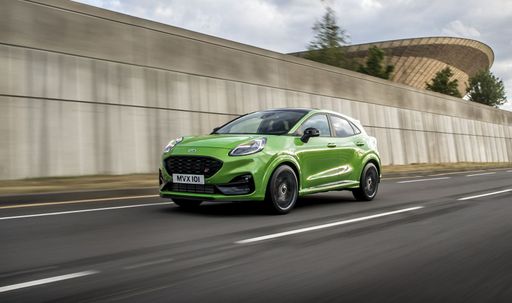 @ puma.fordpresskits.com
@ puma.fordpresskits.com
 @ puma.fordpresskits.com
@ puma.fordpresskits.com
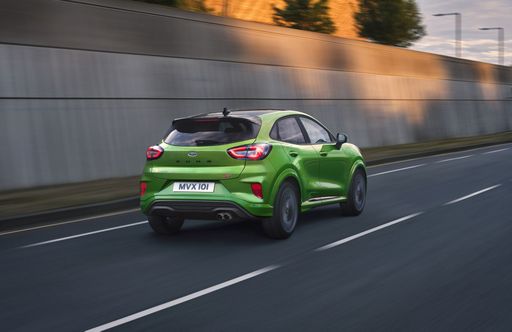 @ puma.fordpresskits.com
@ puma.fordpresskits.com
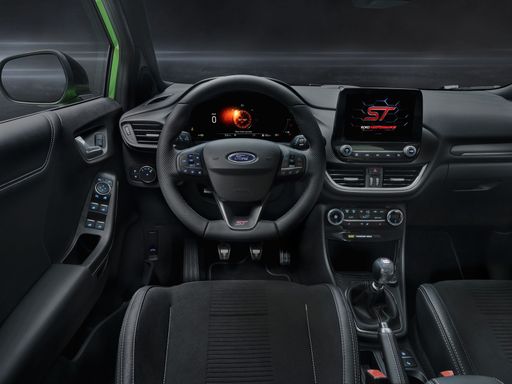 @ puma.fordpresskits.com
@ puma.fordpresskits.com
Jeep Renegade
The Jeep Renegade stands out with its rugged design, embodying the adventurous spirit that the brand is known for. This compact SUV offers a comfortable and versatile interior, making it suitable for both city driving and off-road escapades. With its robust performance capabilities, the Renegade ensures a confident and engaging driving experience across diverse terrains.
details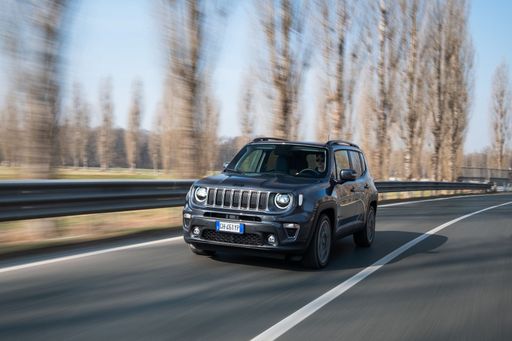 @ media.stellantis.com
@ media.stellantis.com
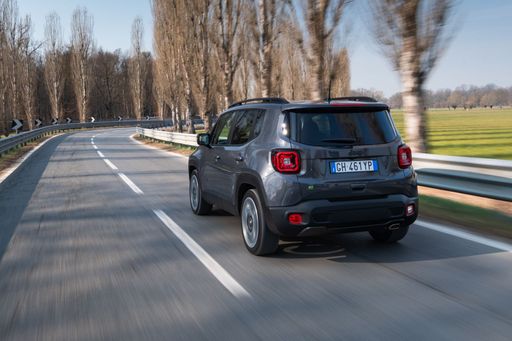 @ media.stellantis.com
@ media.stellantis.com
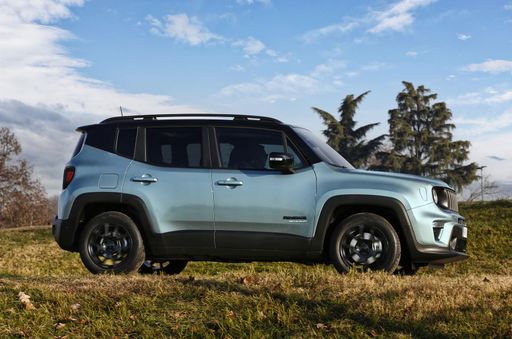 @ media.stellantis.com
@ media.stellantis.com
 @ media.stellantis.com
@ media.stellantis.com
 @ media.stellantis.com
@ media.stellantis.com

|

|
|
|
|
Costs and Consumption |
|
|---|---|
|
Price
24800 - 36300 £
|
Price
26700 - 39200 £
|
|
Consumption L/100km
5.4 - 5.9 L
|
Consumption L/100km
2.1 - 5.5 L
|
|
Consumption kWh/100km
13.1 - 13.9 kWh
|
Consumption kWh/100km
-
|
|
Electric Range
361 - 376 km
|
Electric Range
36 km
|
|
Battery Capacity
43 kWh
|
Battery Capacity
-
|
|
co2
0 - 135 g/km
|
co2
48 - 125 g/km
|
|
Fuel tank capacity
42 L
|
Fuel tank capacity
36 - 48 L
|
Dimensions and Body |
|
|---|---|
|
Body Type
SUV
|
Body Type
SUV
|
|
Seats
5
|
Seats
5
|
|
Doors
5
|
Doors
5
|
|
Curb weight
1316 - 1563 kg
|
Curb weight
1420 - 1770 kg
|
|
Trunk capacity
456 - 523 L
|
Trunk capacity
330 - 351 L
|
|
Length
4186 - 4226 mm
|
Length
4236 mm
|
|
Width
1805 mm
|
Width
1805 mm
|
|
Height
1550 - 1555 mm
|
Height
1684 - 1718 mm
|
|
Max trunk capacity
1216 - 1283 L
|
Max trunk capacity
1277 - 1297 L
|
|
Payload
367 - 469 kg
|
Payload
545 - 570 kg
|
Engine and Performance |
|
|---|---|
|
Engine Type
Electric, Petrol MHEV
|
Engine Type
Petrol MHEV, Plugin Hybrid
|
|
Transmission
Automatic, Manuel
|
Transmission
Automatic
|
|
Transmission Detail
Reduction Gearbox, Manual Gearbox, Dual-Clutch Automatic
|
Transmission Detail
Dual-Clutch Automatic, Automatic Gearbox
|
|
Drive Type
Front-Wheel Drive
|
Drive Type
Front-Wheel Drive, All-Wheel Drive
|
|
Power HP
125 - 168 HP
|
Power HP
130 - 240 HP
|
|
Acceleration 0-100km/h
7.4 - 9.8 s
|
Acceleration 0-100km/h
7.1 - 9.7 s
|
|
Max Speed
160 - 210 km/h
|
Max Speed
191 - 199 km/h
|
|
Torque
170 - 290 Nm
|
Torque
240 Nm
|
|
Number of Cylinders
3
|
Number of Cylinders
4
|
|
Power kW
92 - 124 kW
|
Power kW
96 - 177 kW
|
|
Engine capacity
999 cm3
|
Engine capacity
1332 - 1469 cm3
|
General |
|
|---|---|
|
Model Year
2025
|
Model Year
2024
|
|
CO2 Efficiency Class
A, D
|
CO2 Efficiency Class
D, B
|
|
Brand
Ford
|
Brand
Jeep
|
Is the Ford Puma offered with different drivetrains?
The Ford Puma is offered with Front-Wheel Drive.
The prices and data displayed are estimates based on German list prices and may vary by country. This information is not legally binding.
